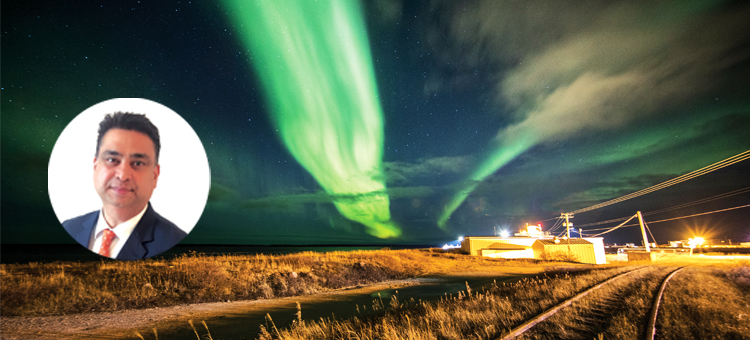Just as he completed a year with Destination Canada in January 2019, CEO & Strategy Director for India, Carl Vaz sat down with Destination Reporter for a detailed chat.
Canada has been active in India for several years now. Growth has been fairly good considering it’s an extreme long haul destination. “We have had single digit growth all these years except last year when we clocked double digit,” informs Vaz. One of the key growth drivers has been enhanced understanding in India about the destination among travel partners, something Vaz has been responsible for.
“Our strategy in India is two-fold: one is to focus on content building, and the second to develop the retail chain – travel agents, tour operators, OTAs, wholesalers. We do not have a consumer strategy for now in India,” states Vaz. When he took over in January last, one of the first things Vaz did was to stop all consumer activations. “This is because we identified that we had to first build plenty of content on the destination. There had to be a lot of engagement required with trade to build packages. All of this before we started addressing the consumer.” 2018 was spent on building content and driving engagement with the retail chain.
Vaz refers to Team Canada in the conversation multiple times and affirms that his role is to bridge the operational silos that exist amongst the various stakeholders – The High Commission of Canada and Consulate Generals, Air Canada, Fairmont Hotels and AccorHotels which have a huge play in Canada and India, major DMCs like Mazda Travels and DMCi – and drive greater synergies through various engagement events and interactions.
Destination Canada had a very robust MRPR (media relations and public relations) strategy in 2018 which Vaz says will continue in 2019. “We broke into broadcast allocating 15 per cent of the budget; print was about 35 per cent and the remaining 50 per cent was spent online and included social media involving bloggers, influencers and celebrities.”
Tour operators, OTAs and consolidators across India like Thomas Cook, Make My Trip, Cox & Kings, Yatra, Kesari and many others are being engaged to sell packages in partnership and for joint marketing campaigns.
In 2017, Canada welcomed 2,54,000 Indian visitors. In 2018, the target was 2,80,000 which the tourism board hopes it would have achieved when official numbers are released soon. “We would like to maintain an 8-10 per cent growth in 2019,” says Vaz. “2,80,000 excludes student and migration visas. A good component is VFR (visiting friends & relatives); leisure, corporate and MICE are also included.” The challenge, according to Vaz, is to help Indian travellers take a deeper dive into Canada by tailoring itineraries and packages that do justice to the unique charm and tourism potential of the country. “Toronto and Vancouver have always been gateways for Indians, based on our research. From Toronto, it’s been Niagara and Montreal. And from Vancouver, it’s been Whistler and Victoria areas in British Columbia. We have to engage Indians to travel to Whistler and Victoria from Vancouver and then go up to Yukon region’s capital Whitehorse and experience Aurora Borealis – The Northern Lights.”
Tour operators in India already sell Rocky Mountains which is the Vancouver-Banff- Jasper-Lake Louis route. “We have to take them beyond,” says Vaz. “You can go to Yellowknife further up North for experiencing The Northern Lights. Canada offers The Northern Lights experience in two places and both are first world comfort cities.”
According to Vaz, even within the Rockies, visitors can explore Canada further like travelling to Calgary in Alberta. The Calgary Stampede, a 10-day festival every July, offers a memorable Cowboy experience complete with First Nations, Inuit and Metis, rodeo and races with horse carts.
Growing East Coast tourism is another priority area. In India, destinations like Montreal, Toronto and Niagara have been sold well historically.
“But look at Quebec from Montreal. How about exploring Atlantic Canada – Nova Scotia, Prince Edward Island, Newfoundland & Labrador,” asks Vaz. Then there is the Winter Wonderland – a transformative travel experience. This is not limited to just Christmas and New Year which is a month-long festival, but undertaking snow skiing and snowboarding, driving a snowmobile, going ice fishing, savoring ice wine, and even residing in an ice hotel (for the first time in Canada), through the months of January and even February.
Destination Canada has a fair bit of traffic between April and July, the summer holiday season. “We want to promote Canada during Indian festival holidays like Diwali, Dussera, Durga Pooja and Onam. How do we get FITs and small groups to travel during this time?”
Canada has revised visa fee to CAD 185 effective January 1, 2019. Travellers have to first apply online, upload all documents and pay the fee. There is no personal interview; only online application and biometric (performed by VFS Global in India).
The application letter is submitted along with the passport and applicants receive the passport with visa sticker within five days. This can be done at any VAC (Visa Application Centre) around the world. For Indian travellers with valid US visa or expired Canada visa there is no need to upload financial documents under the CAN PLUS program.





